Quick Look
Grade Level: 6 (5-7)
Time Required: 1 hours 45 minutes
(two 50-minute sessions)
Lesson Dependency: None
Subject Areas: Earth and Space
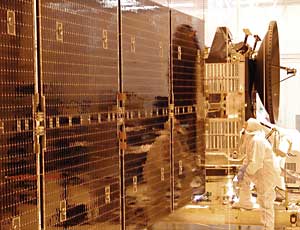
Summary
Students learn how the innovative engineering of photovoltaics enables us to transform the sun’s energy into usable power—electricity—through the use of photovoltaic cells. Watching a short video clip from “The Martian” movie shows the importance of photovoltaics in powering space exploration at extreme distances from the Earth. Then students learn that the photovoltaic technologies designed to excel in the harsh environment of space have the potential to be just as beneficial on Earth—providing electricity-generating systems based on renewable energy sources is important for our electricity-gobbling society. Two student journaling sheets assist with vocabulary and concepts.Engineering Connection
Space exploration has challenged engineers to find creative ways to provide power to devices traveling far beyond the reaches of the nearest outlet, beyond where even the longest extension cord could reach (!). Aiming for the first human mission to Mars in 2030, NASA is now challenged to provide power 140 million miles from home! That’s where photovoltaic solar cells come to the rescue! Because the space environment is harsh and so far away from help, engineers are pushed to innovate extremely reliable, efficient and lightweight photovoltaic cells. As industry develops cost-effective ways to mass produce these solar cells, the technology is expected to transform the use of photovoltaics for power-generation on Earth, where the demand for “clean” electricity is growing.
Learning Objectives
After this lesson, students should be able to:
- Define the technology terms photovoltaics (PV), photovoltaic (solar) cell, solar energy and solar panel.
- Explain how people use the sun as a renewable energy source for power on Earth.
- Explain how the sun is used as a renewable energy source for power in space.
Educational Standards
Each TeachEngineering lesson or activity is correlated to one or more K-12 science,
technology, engineering or math (STEM) educational standards.
All 100,000+ K-12 STEM standards covered in TeachEngineering are collected, maintained and packaged by the Achievement Standards Network (ASN),
a project of D2L (www.achievementstandards.org).
In the ASN, standards are hierarchically structured: first by source; e.g., by state; within source by type; e.g., science or mathematics;
within type by subtype, then by grade, etc.
Each TeachEngineering lesson or activity is correlated to one or more K-12 science, technology, engineering or math (STEM) educational standards.
All 100,000+ K-12 STEM standards covered in TeachEngineering are collected, maintained and packaged by the Achievement Standards Network (ASN), a project of D2L (www.achievementstandards.org).
In the ASN, standards are hierarchically structured: first by source; e.g., by state; within source by type; e.g., science or mathematics; within type by subtype, then by grade, etc.
NGSS: Next Generation Science Standards - Science
-
Energy may take different forms (e.g. energy in fields, thermal energy, energy of motion).
(Grades 6 - 8)
More Details
Do you agree with this alignment?
-
The transfer of energy can be tracked as energy flows through a natural system.
(Grades 6 - 8)
More Details
Do you agree with this alignment?
International Technology and Engineering Educators Association - Technology
-
Students will develop an understanding of the relationships among technologies and the connections between technology and other fields of study.
(Grades
K -
12)
More Details
Do you agree with this alignment?
-
Students will develop an understanding of and be able to select and use energy and power technologies.
(Grades
K -
12)
More Details
Do you agree with this alignment?
-
Power systems are used to drive and provide propulsion to other technological products and systems.
(Grades
6 -
8)
More Details
Do you agree with this alignment?
-
Apply a product, system, or process developed for one setting to another setting.
(Grades
6 -
8)
More Details
Do you agree with this alignment?
State Standards
New Mexico - Science
-
Know that there have been manned and unmanned journeys to space and to the moon.
(Grade
5)
More Details
Do you agree with this alignment?
-
Explain how energy from the sun supports life on Earth.
(Grade
7)
More Details
Do you agree with this alignment?
Worksheets and Attachments
Visit [www.teachengineering.org/lessons/view/unm-2006-photovoltaics-cells-solar-energy-panel-space] to print or download.Pre-Req Knowledge
Students should have a basic understanding that a variety of different energy forms can be converted into electricity, which is used to provide power (electricity) to the built world around us.
Introduction/Motivation
(In advance of the lesson, for Day 1:
- If available, have a loud bell nearby to ring.
- Have ready for each three-person group an individual (small-size) whiteboard and dry-erase marker; alternatively, use paper/pencils and the classroom board.
- Be ready to show the class two short video clips.
- (optional) Obtain solar viewing glasses for students to use, such a package of 25 Rainbow Symphony Eclipse Glasses – safe solar viewers – eclipse shades, for $21 at Amazon
In advance of the lesson, for Day 2:
- Make copies of Photovoltaics Defined Interactive Journal Template and Solar Energy Can Become Interactive Journal Template, one each per student.
- Have available pencils and paper.
- (optional) Have available scissors and glue.
- Be ready to project the Photovoltaics Defined Resource Sheet and Solar Energy Can Become Resource Sheet to the class.
- Be ready to play for students a short YouTube audio clip as part of the lesson closure.)
Day 1
(As class begins, assemble the class into groups of three students each.)
Close your eyes and take a journey with me back in time—to 6AM this morning. The loud beeping of your alarm clock wakes you from the best kind of dream ever, and after hitting the snooze button far too many times, you force yourself out of bed. You flip on the light switch in the bathroom and take a nice, hot shower, the smell of breakfast wafting through the air. You quickly finish getting ready for school, with the sound of the TV droning on in the background. The bus beeps its horn and you grab your backpack, cell phone and breakfast burrito off the table, racing to catch the bus. You put in your earbuds as you settle in for the 30-minute ride, and check out the latest upload by your favorite YouTuber. As the bus pulls up in front of school, you finish the last bite of your burrito and race to class in order to beat the tardy bell. (If available, jolt students back to reality with the sound of a bell.)
Okay everyone, open your eyes. Now, working in your group, make a list of all of the things you used this morning that required some type of power source—from the moment you woke up until the moment you walked into this classroom. You have five minutes. (As you provide these instructions, hand each group an individual whiteboard and a dry erase marker. During the five minutes, circulate around the room to keep teams on task, as well as provide support if they have difficulty coming up with ideas.)
(After five minutes, lead a class-wide discussion in which teams share their ideas, compiling them into one list on a large whiteboard or chart paper at the front of the classroom. Once the ideas slow down, ask students to name what power source they used for each item listed. Answer: Electricity.)
Now, imagine that you are 238,900 miles away from home, in the vastness of space, and suddenly something goes wrong—very, very wrong. Are you familiar with this story? “Houston, we’ve had a problem.”
(Show students the three-minute video of the Apollo 13 movie scene depicting the unraveling of the 1970 moon mission at https://www.youtube.com/watch?v=C3J1AO9z0tA.)
How did the Apollo 13 astronauts transmit their need for help from the lunar capsule in outer space to mission control in Houston, TX, more than 200 thousand miles away, with no electrical outlet? (Expect this movie clip to help students understand the absolute critical system failures that the astronauts were experiencing, and be excited to share their ideas! Give students a few minutes to share with the class, limiting the number of ideas to five or six in order to keep everyone focused.)
Well, as it turned out, during this 1970 moon mission, the Apollo astronauts transmitted all communication to Earth over radio frequencies.
But, what if you are 140 million miles from home, left behind, stranded and far beyond the reach of radio frequencies—what then? How could you transmit a message to Earth that you need help, and then stay alive during the four years it takes for that help to arrive? (Show students the three-minute trailer from The Martian movie at https://www.youtube.com/watch?v=ej3ioOneTy8.)
What sources of power did you see stranded astronaut Mark Watney (actor Matt Damon) use during the movie trailer we just watched?
(Expect students to quickly come up with the answer—solar power. If students struggle to make that connection, show them Figure 1.)
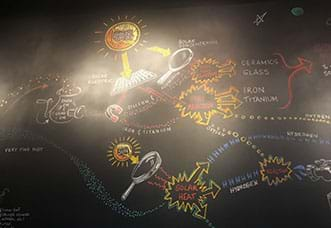
(optional) Now, you are going to get to see the power of the sun in action, by safely viewing the surface of the sun. (Hand each student a pair of solar glasses and go outside where you have an unobstructed view of the sun. Remind students to never look directly at the sun because it can damage their eyes in just a few seconds.)
Day 2
As students come into class, hand each a Photovoltaics Defined Interactive Journal Template. (optional: These interactive journal templates are designed to be cut, folded and glued together, to create or add to each student’s continually growing “Interactive STEM Journal.” If you want students to do this, direct them to do the following:
- Cut along the solid line forming the external edge of the interactive journal template.
- Cut along the solid lines between the words, stopping at the dotted line, creating flaps.
- Fold along the dotted line.
- Glue the interactive journal template into the STEM journal.)
Next, project the Photovoltaics Defined Resource Sheet onto the large whiteboard and direct students to take notes from it.
Once students have copied the definitions for four vocabulary words (photovoltaics, photovoltaic cell, solar energy, solar panel), hand each student a Solar Energy Can Become Interactive Journal Template. (If desired, again have students cut, fold and glue this interactive journal template into their STEM journals.)
Next, project the Solar Energy Can Become Resource Sheet onto the large whiteboard so students can take notes from it, onto their own journal templates. Consider conducting the fun and interactive associated activity E.T. Phone Home: Fact or Fiction? where teams engage in an interactive activity to answer the question: E.T. phone home—fact or fiction? To discover clues to unlock padlocks on a box that contains the answer, teams watch a short online video, do a crossword puzzle, scan three QR codes for articles to read, and restore a cut-apart puzzle wordle to find an invisible ink clue.
Lesson Background and Concepts for Teachers
For decades, the growing human demand for the fastest, most innovative, technologies was limited only by our imaginations—until the electricity sources that we use to power that technology began to create problems for our planet. The primary ways that humans currently generate electricity are depleting the Earth’s resources while harming its surface, water and air. While having abundant electricity is important, having a healthy planet is important, too. Photovoltaics is an underutilized electricity source, one that is efficient, reliable and friendlier to life on the planet—and based on a renewable energy source—the sun!
Many engineers today are focusing on advancing photovoltaics technology. For example, researchers at Quantum Energy and Sustainable Solar Technologies (QESST)—a multi-university engineering research center supported by the National Science Foundation and the U.S. Department of Energy—are dreaming up and testing innovative and sustainable new electricity-generation solutions to meet the growing demand.
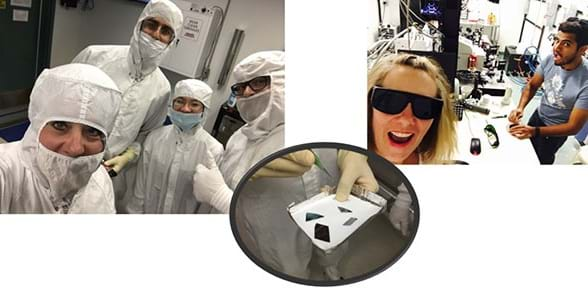
QESST researchers recognize that “electricity is the lifeblood of modern society, powering everything from cities to pacemakers” and that we need a new electricity-generation system that is less wasteful, more efficient, available everywhere, and takes advantage of the unlimited energy resource of the sun. The operation of photovoltaics generates no pollution and no gas emissions.
Teaching students about renewable energy sources helps to prepare our next generation of researchers, engineers and space pioneers to be able to make wise future decisions about how we power our world and venture into distant space.
In 1986, after the Challenger shuttle disaster, President Ronald Reagan assured citizens that the U.S. space effort would continue. He said: “Sometimes we forget that we’ve only just begun. What happened today won’t put an end to it. The future does not belong to the faint-hearted. It belongs to the brave.”
Associated Activities
- E.T. Phone Home: Fact or Fiction? - The “E.T. the Extra-Terrestrial” movie provides the backdrop scenario for students to discover how the sun’s energy provides power to thousands of orbiting satellites as well as enables long-distance communication (including E.T. phoning home!). Teams engage in an interactive activity to answer the question: E.T. phone home—fact or fiction? To discover clues to unlock padlocks on a box that contains the answer, teams watch a short online video, do a crossword puzzle, scan three QR codes for articles to read, and restore a cut-apart puzzle wordle to find an invisible ink clue.
Lesson Closure
(Play the original 16-second audio recording of the Apollo 13 astronauts transmitting to mission control in Houston, TX, their message of distress, at https://www.youtube.com/watch?v=eco_xvkEQlg.)
“Houston, we’ve had a problem.” On their moon mission, the Apollo 13 astronauts sent this request for help to NASA, which was transmitted via radio signals.
However, to communicate from ever greater distances, such as 140 million miles near Mars, which requires years to travel, radio signals, electrical outlets and extension cords are simply not an option!
Because of human inventions that use the energy of the sun as an unlimited power source, NASA can now stay in communication with equipment near Mars and beyond—as we saw illustrated in The Martian movie plot to “bring him home.” As our future explorers and inventors, what are your ideas for smart electricity generation?
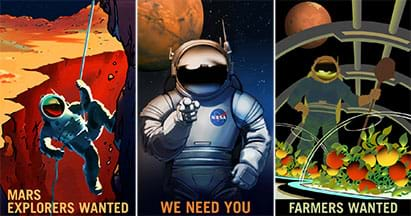
Vocabulary/Definitions
photovoltaic cell: A device that converts the energy of light directly into electricity. Also called a solar cell. Solar cells are the building blocks of solar panels.
photovoltaics: The transformation of solar (light) energy into electricity (a more useable form of power) using semiconducting materials that exhibit the photovoltaic effect. The word breaks down into “photo,” meaning light, and “voltaic,” meaning electricity. Abbreviated as PV.
solar energy: Energy that comes from the sun in the form of radiant light and heat.
solar panel: A panel consisting of many individual solar cells that work together to produce electricity.
Assessment
Pre-Lesson Assessment
Warm-Up: Working in groups, ask students to make lists of all the “things” they used before coming to school that required some type of power—from the moment they woke up until the moment they walked into the classroom. As a follow-up question, ask students to add to their lists what power source they used for each device. (Answer: Electricity.)
Lesson Summary Assessment
Exit Ticket: Give students 10-15 minutes to provide short, bulleted answers to each of the individual learning targets provided below. (An exit ticket is a quick check at lesson end to gauge student understanding of the material covered during class and to resolve any misconceptions and misunderstandings before moving on to new content.)
- Define the term photovoltaics. (Answer: PV is the transformation of solar [light] energy into electricity—a useable form of power. The word breaks down into “photo,” meaning light, and “voltaic,” meaning electricity.)
- Define the term photovoltaic (solar) cell. And what is a solar panel? (Answer: A device that converts the energy of the sun into electricity. A solar panel is a collection of many solar cells that work together to generate electricity.)
- Define the term solar energy. (Answer: Energy from the sun in the form of heat and light.)
- Explain how people use the sun as a renewable energy source for power on Earth. (Answer: Solar energy can be transformed into electricity, which can then be used to power devices such as cell phones, cars, computers, water heaters, refrigerators, microwaves, all sorts of other devices, etc.)
- Explain how the sun is used as a renewable energy source for power in space. (Answer: Solar energy can be transformed into electricity, which can be used to communicate, even when millions of miles away from the Earth.)
Lesson Extension Activities
Have students work in groups to each develop a catchy meme that encourages the use of solar energy to save the planet! (Many free internet meme generators are available online or as apps.) Spread the message about solar energy as a solution by sending the memes to newspapers, senators and congressmen, and social media, and displaying them throughout the school to promote energy consciousness. As makes sense, require that students cite text evidence that supports the content in their memes.
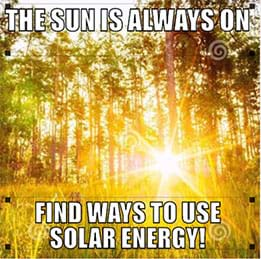
Additional Multimedia Support
At various points during the lesson, show the class the following video/audio clips:
- Apollo 13 (1995) - Houston, We Have a Problem Scene (4/11) | Movieclips (3:03 minutes) at https://www.youtube.com/watch?v=C3J1AO9z0tA
- The Martian | Official Trailer [HD] | 20th Century FOX (3:08 minutes) at https://www.youtube.com/watch?v=ej3ioOneTy8
- The original 16-second audio recording of the Apollo 13 astronauts transmitting a message of distress to mission control. Houston, we’ve had a problem: https://www.youtube.com/watch?v=eco_xvkEQlg
You may want to show students a 3:15-minute video excerpt from an interview with actor Matt Damon about The Martian movie in which he talks about the importance of continued engineering, space exploration and a pioneering spirit to the future of our species. The Martian: Matt Damon Official Movie Interview - Science Fiction at https://www.youtube.com/watch?v=jgIZRdeMO_I
You may want to print and display some of the eight Mars Explorers Wanted NASA promotion posters around your classroom; free download at https://mars.nasa.gov/multimedia/resources/mars-posters-explorers-wanted/
Subscribe
Get the inside scoop on all things TeachEngineering such as new site features, curriculum updates, video releases, and more by signing up for our newsletter!More Curriculum Like This

Students learn how the sun can be used for energy. They learn about passive solar heating, lighting and cooking, and active solar engineering technologies (such as photovoltaic arrays and concentrating mirrors) that generate electricity.

In an engaging E.T. the Extra-Terrestrial movie context, teams watch online movie clips and solve fun puzzles to discover clues to unlock padlocks on a box to answer the question: E.T. phone home—fact or fiction? They learn that renewable solar energy powers satellites and space communication.

Students learn and discuss the advantages and disadvantages of renewable and non-renewable energy sources. They also learn about our nation's electric power grid and what it means for a residential home to be "off the grid."

Students calculate the amount of solar energy available at a given location and time of day on Earth. They learn the importance of determining incoming solar energy for solar devices.
References
Fox, Steve. Last updated August 4, 2017. “Nine Real NASA Technologies in ‘The Martian’.” NASA. Accessed December 12, 2017. https://www.nasa.gov/feature/nine-real-nasa-technologies-in-the-martian
Here’s What Matt Damon & NASA Can Teach You About Solar Panels (5 Surprising Things You Can Learn about Solar Power from The Martian). Posted February 2016. Alba Energy Solar Power. Accessed December 12, 2017. http://albaenergy.com/2016/02/5-surprising-things-you-can-learn-about-solar-power-from-the-martian/
Hirsley, Michael. “Shuttle Tragedy Stuns Nation: Spacecraft, Crew Lost in Mystery Blast.” Published January 29, 2986. Chicago Tribune. Accessed December 12, 2017. (Reagan quotation) http://articles.chicagotribune.com/1986-01-29/news/8601070986_1_crew-members-greg-jarvis-debris
Knier, Gil. “How Do Photovoltaics Work?” NASA Science Newsletter, Science Beta, NASA. Accessed December 12, 2017. https://science.nasa.gov/science-news/science-at-nasa/2002/solarcells
Quantum Energy and Sustainable Solar Technologies—an NSF-DOE Engineering Research Center. Accessed December 12, 2017. https://qesst.asu.edu/
Copyright
© 2017 by Regents of the University of Colorado; original © 2016 University of New MexicoContributors
Jodie GuillenSupporting Program
Energizing Engineering Education (E3) RET Program, School of Engineering and College of Education, University of New MexicoAcknowledgements
This curriculum is based upon work supported by the National Science Foundation under RET grant no. EEC 1301373—the Energizing Engineering Education (E3) Research Experiences for Teachers site, investigating energy research and engineering practice at the School of Engineering and College of Education at University of New Mexico. Any opinions, findings, and conclusions or recommendations expressed in this material are those of the author(s) and do not necessarily reflect the views of the National Science Foundation.
Many thanks to the Quantum Energy and Sustainable Solar Technologies Engineering Research Center (QESST) sponsored by the National Science Foundation and the U.S. Department of Energy for the author’s summer 2016 RET lab experience at the University of New Mexico, research educational poster session at Arizona State University in July 2016, and NSF site visit at ASU in April 2017.
Last modified: June 30, 2020






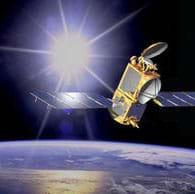


User Comments & Tips